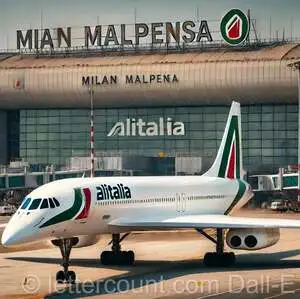Aviation: The Kingdom of Few Letters
When it comes to aviation and the airline industry, clear communication is essential. Whether from a NATO phonetic alphabet to ensure spelling, three-letter airport codes for a worldwide stage, or precise phrases like cleared for takeoff and mayday to ensure safety in high-pressure situations, the world of aviation has its own unique language. But where did words like mayday even come from? And with so many peculiar choices like LAX for Los Angeles or even the few that make us giggle like WTF for Western Nebraska Regional Airport—how and why did this language develop?
Aviation: The Kingdom of Few Letters
- Interesting and Unusual 3-Letter Airport Codes
- Examples of Clear and Brief Communication in Aviation
- Getting to Know the NATO Phonetic Alphabet
Aviation: The Kingdom of Few Letters. If there is one domain where short and clear expressions are vital to the point that life actually depends on them, it's aviation. Three-letter codes for airports, various codes to signify emergencies or other procedures, and telegraphic language stripped of unnecessary letters and characters are integral to the communication among pilots, air traffic controllers, and engineers worldwide. Here is a look at this interesting facet of conciseness.
Interesting and Unusual 3-Letter Airport Codes
YYZ (Toronto Pearson International Airport, Canada): It's unusual because it doesn’t match any obvious abbreviation for Toronto. The code comes from the two-letter Canadian radio station code "YZ," with a "Y" prefix that signifies an airport.
GIG (Rio de Janeiro-Galeão International Airport, Brazil): The code "GIG" is catchy and memorable, and it reflects the original name of the airport, Galeão International Airport.
LAX (Los Angeles International Airport, USA): The "X" in LAX is interesting because it was added to the original LA designation when the codes expanded from two to three letters.
WTF (Western Nebraska Regional Airport, USA): This code is amusing and unusual due to its common slang meaning, although it stands for Western Transport Field.---

The airport code "MIL" stands for the area code encompassing all airports, in Milan, Italy. This includes the three airports;
Milan Malpensa Airport (MXP)
Milan Linate Airport (LIN)
Milan Bergamo Airport (Orio al Serio) (BGY)
"MIL" doesn't represent an airport but rather denotes the collective city code for Milan's airports.
The airport code "PAR" serves as the metropolitan area identifier for all airports operating in Paris, France. This covers the two airports:
Charles de Gaulle Airport (CDG)
Orly Airport (ORY)
The airport code "NYC" is used as the area code for all airports serving New York City, USA. This encompasses the three airports;
John F. Kennedy International Airport (JFK)
LaGuardia Airport (LGA)
Newark Liberty International Airport (EWR)
Therefore if you're planning to travel from New York to Paris and need information on connected airports simply enter NYC PAR to view all available options.
When searching for flights, from any New York airport to Paris simply enter NYC PAR in the search bar to view options. A handy tip for those who prefer a short way of typing! See this Google page for complete shorthand instructions about flights search.
Examples of Clear and Brief Communication in Aviation
Pan Pan; This signal is used to indicate a situation that does not pose an immediate threat to life or the aircraft. It originates from the word "panne " meaning a breakdown. A pilot using "Pan Pan" three times is signaling an issue that needs attention but is not a distress call.

Mayday; This word serves as a distress signal in voice procedure radio communications during emergencies. It is repeated thrice ("Mayday, Mayday Mayday") to differentiate it from sounding terms and signify a life threatening situation.
Roger; This indicates that a message has been received and understood, derived from the alphabet where "R" represents "received."
Wilco; An abbreviation, for "will comply " signaling intent to follow received instructions.
Aviation Language
Aviation English serves as a mode of communication, in the aviation sector aiming to ensure precise exchanges. This unique form of communication is crafted to be understood by pilots, air traffic controllers and ground staff of their native languages. It relies on a set of phrases and expressions that play a role in minimizing misunderstandings during critical moments. Emphasizing simplicity and conciseness Aviation English facilitates information sharing. For instance of employing terms it opts for precise language like "climb" and "descend" to indicate changes in altitude. Moreover the use of an alphabet enhances clarity when spelling out characters during radio transmissions reducing the chances of misinterpretation. Through adherence to these established norms Aviation English fosters effective and efficient communication across borders promoting safety and coordination in aviation operations.
"Cleared for Takeoff"; This phrase signifies that an aircraft has been granted permission by air traffic control to commence its takeoff procedure indicating that the runway is clear for departure.
"Holding Pattern"; This term is utilized when an aircraft is directed to maintain a flight pattern while awaiting instructions due to factors such as traffic congestion or adverse weather conditions, at the intended destination airport.
"Flight Level" refers to the altitude at which an aircraft is flying typically expressed in hundreds of feet. For instance when you hear "Flight Level 350 " it means the aircraft is cruising at 35,000 feet above sea level.
When a pilot receives a "Go Around" instruction it means they should abort their landing approach and circle back for another try. This usually happens if there are safety concerns, on the runway or if the approach is unstable.
The term "Squawk" involves setting a code on the aircraft's transponder. For example "Squawk 7500" indicates a hijacking situation "Squawk 7600" signals a radio communication failure and "Squawk 7700" denotes an emergency.

In aviation using phraseology helps streamline communication between pilots and air traffic controllers for efficiency and safety. Specific phrases like "affirm" of "yes" and "negative" of "no" are used to avoid any misunderstandings, in crucial situations; these are among the rare examples where more letters are easier to comprehend than less.
These set phrases are carefully designed to avoid any confusion and make sure that everyone involved clearly understands each instruction and response. Using these expressions is essential, for maintaining an dependable communication channel in challenging or noisy situations. By sticking to wording aviation professionals can easily and accurately share information decreasing the chances of mistakes and improving overall flight safety.
"Affirm"; This term means "yes" in aviation communication preventing any mix up with the negative response "no" and ensuring clear confirmation of instructions or information.
"Negative"; This phrase signifies "no" or contradicts a previous statement or instruction eliminating ambiguity and offering a definite response in communication.
"Wilco"; Short for "will comply " this expression shows that the pilot has received the instruction and will follow it. It's a way to confirm understanding and intention to act as directed.
"Standby"; Used when theres a delay, in responding or taking further action. It tells the party to wait while necessary information or additional instructions are being prepared."Repeat Please"; When air traffic controllers ask pilots to say back the instructions exactly as given it helps confirm that the message was received and understood correctly reducing the chances of misunderstandings.
Getting to Know the NATO Phonetic Alphabet
The NATO phonetic alphabet plays a role, in aviation communication by ensuring that letters are clearly communicated, in situations with language barriers or poor radio reception. This standardized alphabet uses words like 'Alpha' for A 'Bravo' for B and 'Charlie' for C of letters. This approach eliminates any confusion in communication, which's critical in the high pressure field of aviation.
For individuals looking to use the NATO alphabet spellnato.com provides a user interactive platform. By entering text users can easily see the letters spelled in NATO alphabet making it a convenient tool for phone conversations or speaking with individuals who are hard of hearing.
